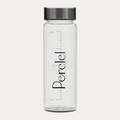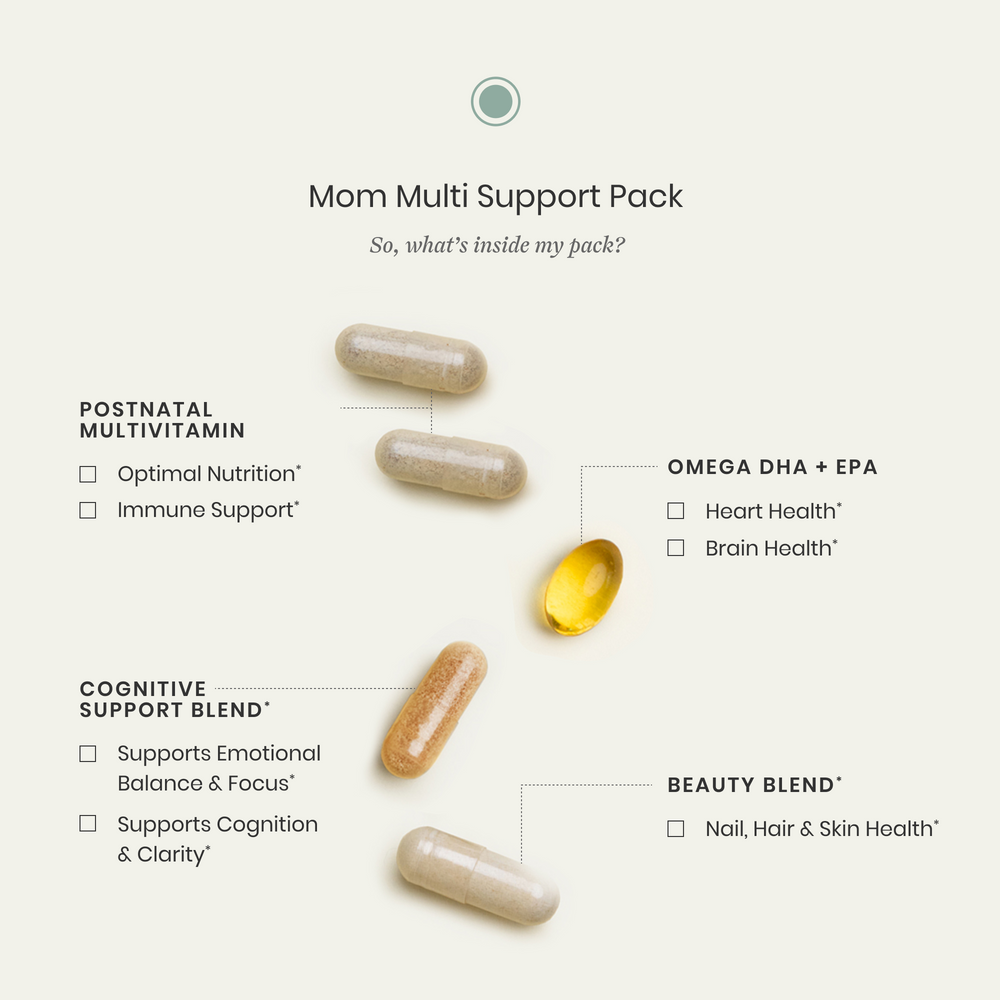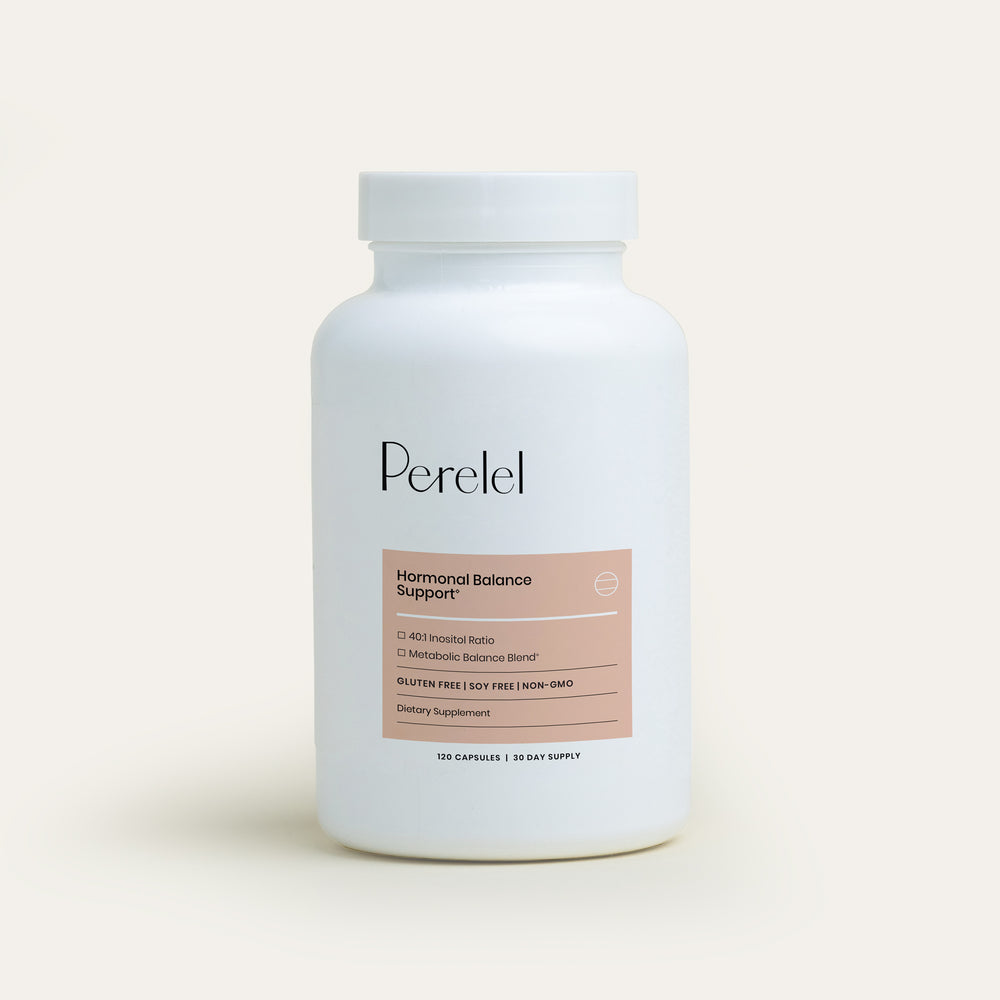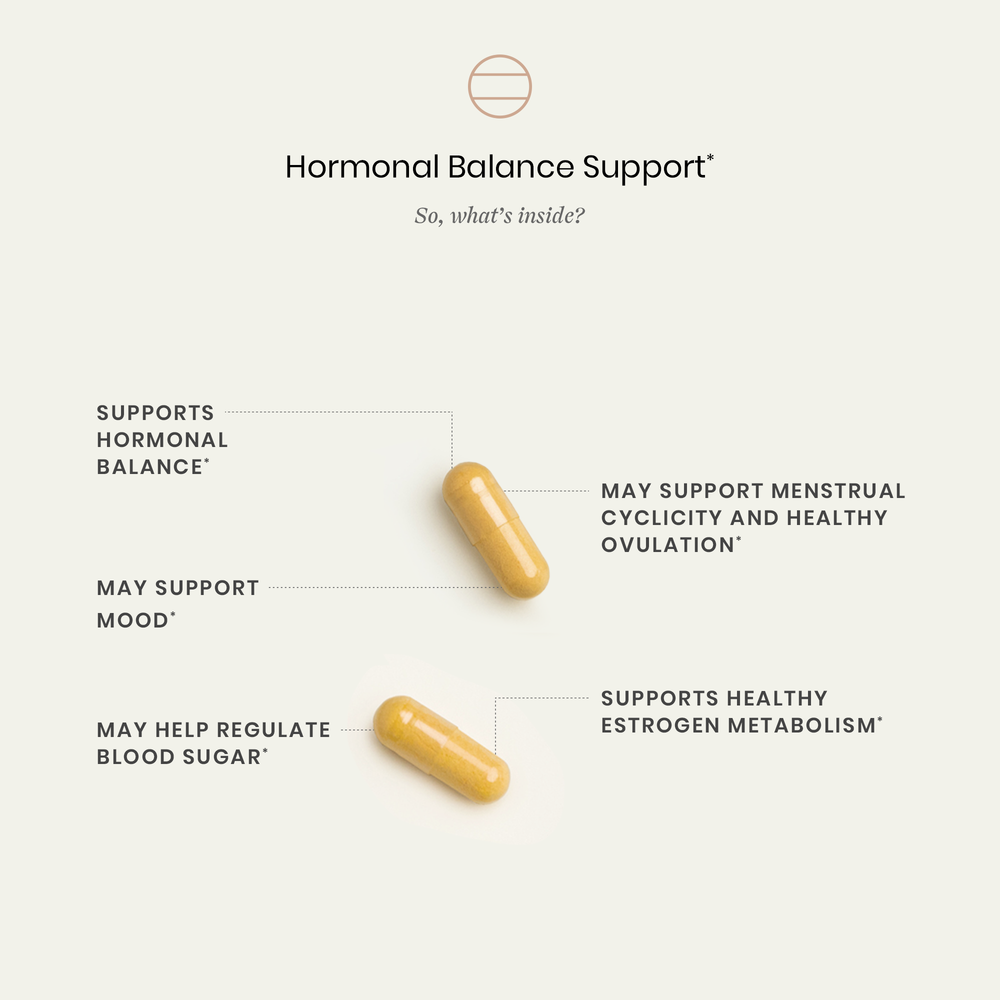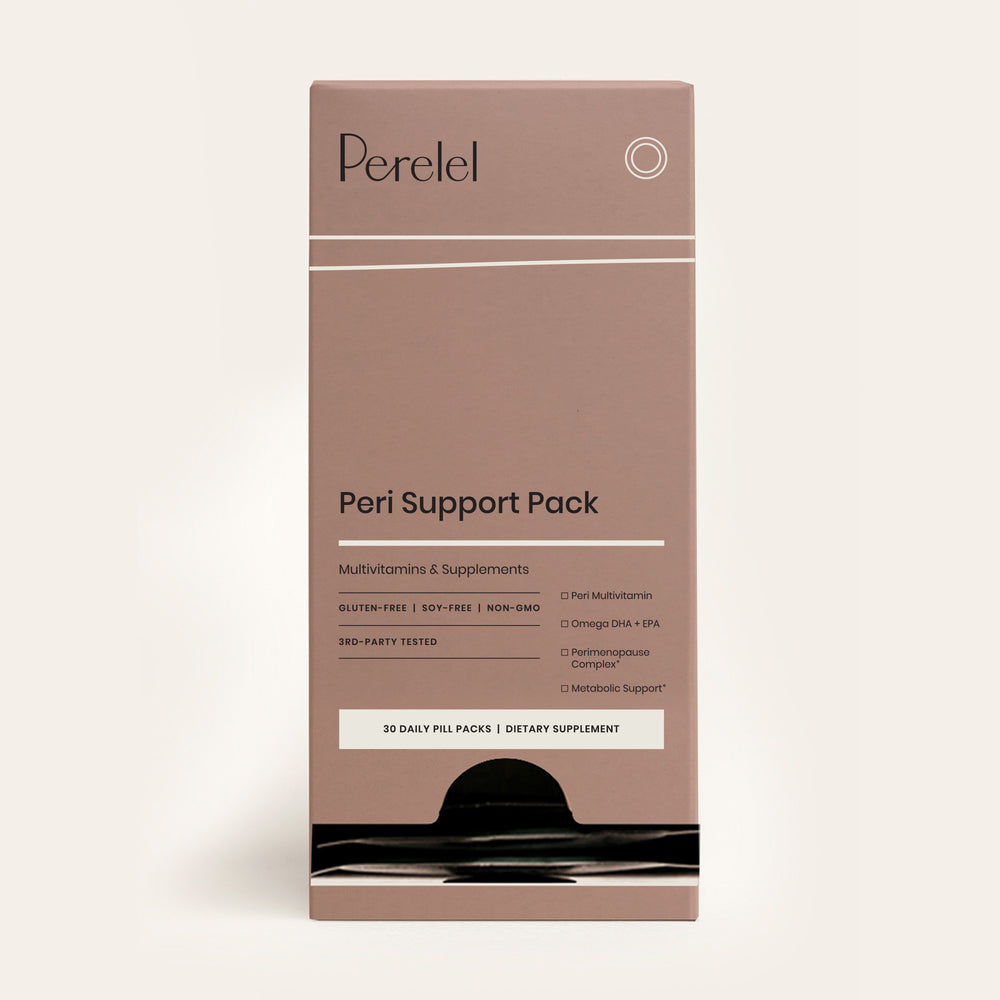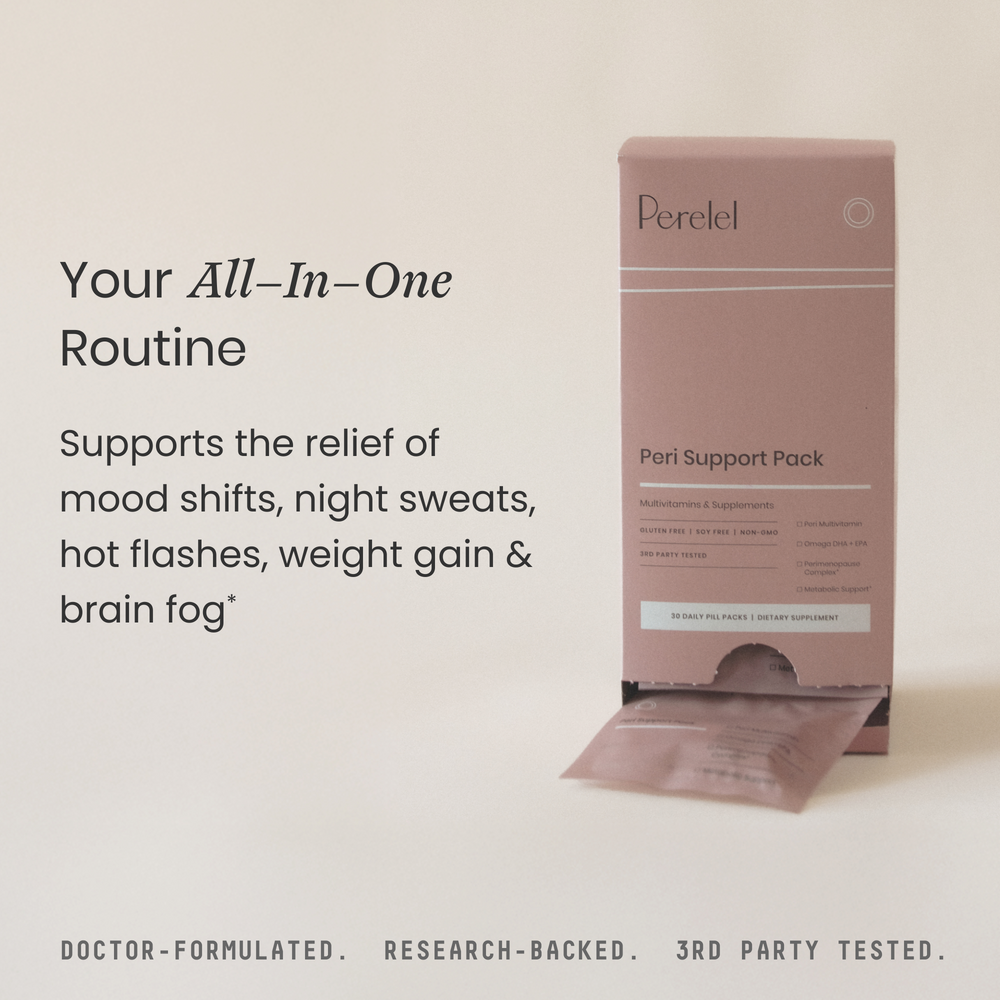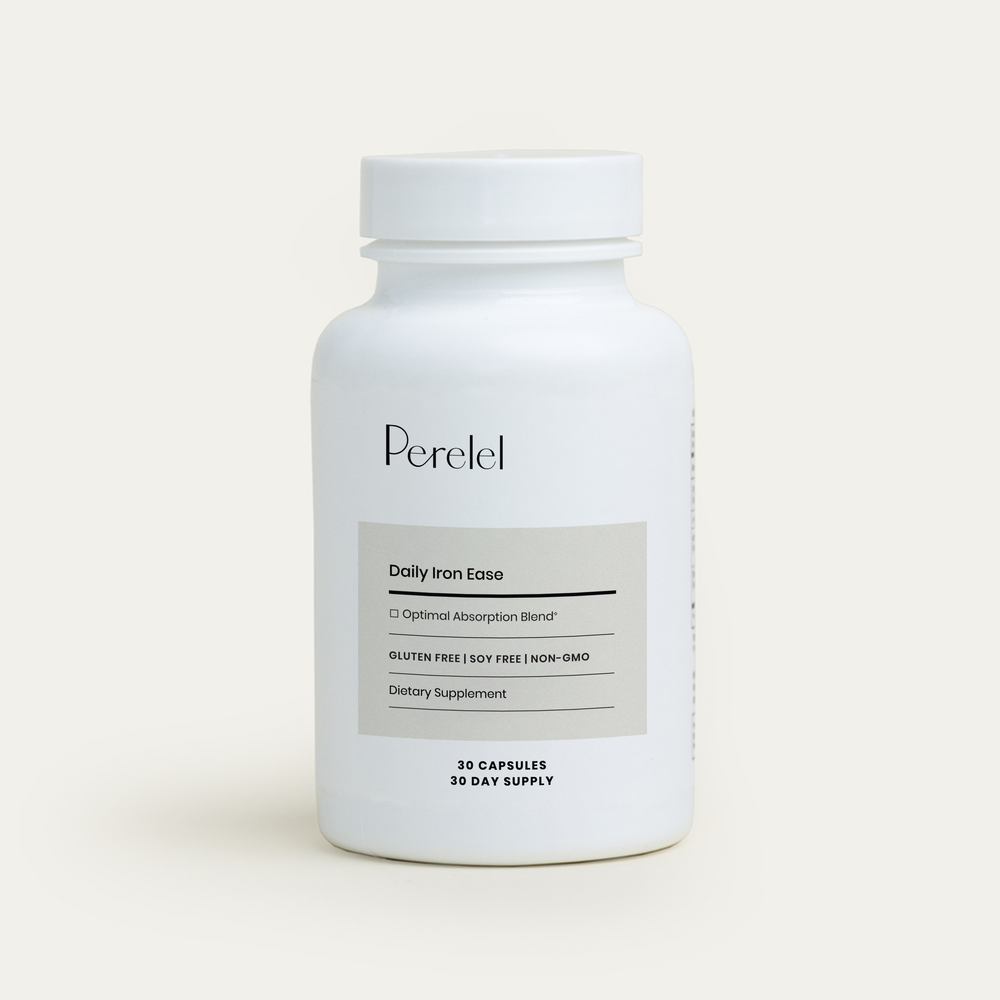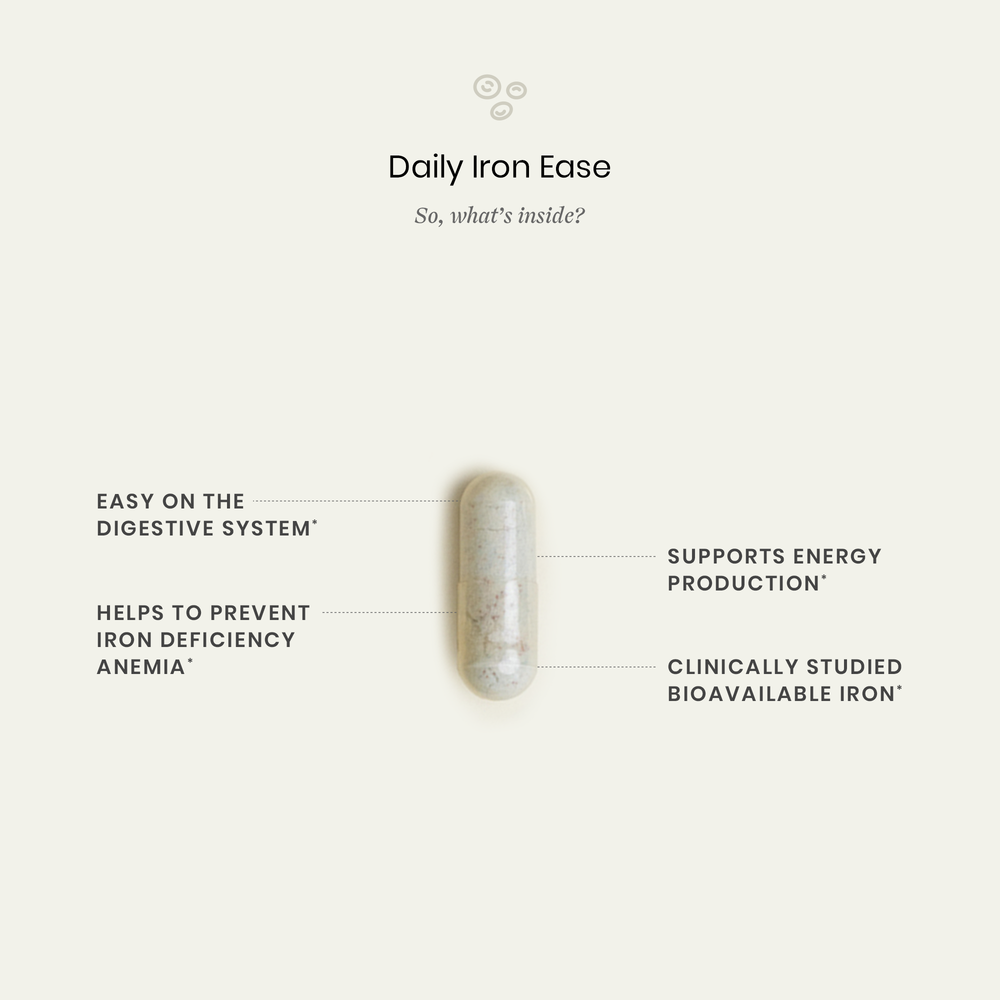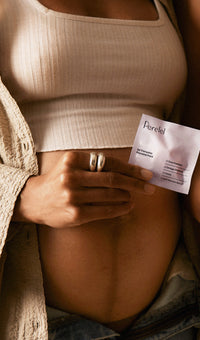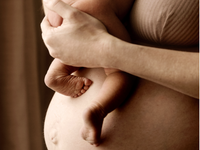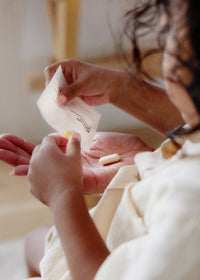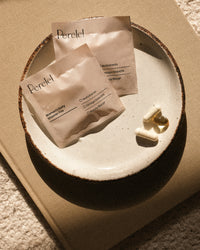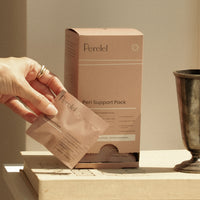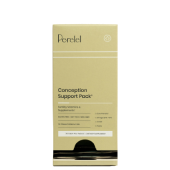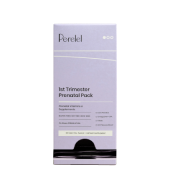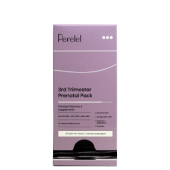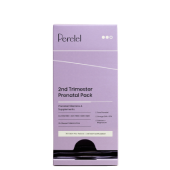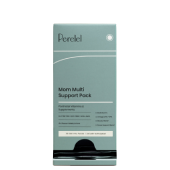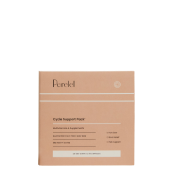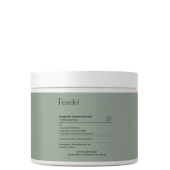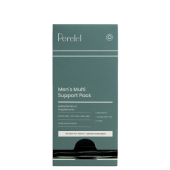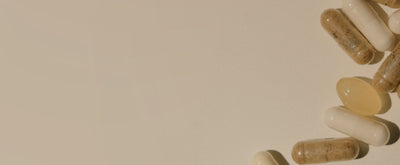Hormones are constantly evolving—and as women, it can be tough to keep up. Whether you're managing acne and irregular periods in your 20s or hot flashes all day in your 40s, each hormonal life stage requires its own unique set of tools and support. For Perelel, that support translates to supplements formulated by doctors, and grounded in both clinical research and everyday life.
Below, we break down what your body needs if you're navigating hormonal issues or specific stages that require relief: PCOS, perimenopause, postpartum and endometriosis. It’s about normalizing these chapters with answers and holistic support. Let’s get started:
Supporting PCOS: Restoring Ovulation + Metabolic Balance
First things first: PCOS isn’t *just* a reproductive health issue. It’s associated with increased risk of:
-
Depression
-
Sleep disorders
-
Type 2 diabetes
-
Heart disease
-
High blood pressure
PCOS also increases the risk of endometrial hyperplasia, a condition where the lining of the uterus gets too thick, which can raise the risk of endometrial cancer.
How Do You Know If You Have PCOS?
PCOS affects as many as 1 in 10 women, yet it’s often misunderstood. The truth is, symptoms vary widely. However, a few key signs you may have PCOS can include:
-
Irregular or absent periods
-
Fertility issues
-
Weight gain, especially around the belly
-
Thinning hair on your head
-
Hair growth on the face, chest, abdomen, or upper thighs
-
Acne
-
Skin tags on the neck or armpits
-
Dark, velvety skin patches
-
Ovaries with multiple small cysts
-
Enlarged ovaries
Is It PCOS, or Is It Something Else?
PCOS often starts soon after your first period, but it can also show up later. It’s common for lots of people not to get a diagnosis until later in life.
If you think you might have PCOS, your doctor will check to see if you have at least two of these three symptoms to confirm a diagnosis:
-
Irregular or no periods
-
Higher than normal androgen levels
-
Multiple small ovarian cysts
If you want to ask your doctor about PCOS, a few sample conversation starters might be:
“I've had irregular cycles my whole life and I'm worried I might have something like PCOS. Could you do an exam, labs, or imaging to look into it?”
“Are there any lifestyle changes you can recommend to help with my symptoms?”
“I want to start birth control to help with my PCOS but I'm worried about trying to get pregnant in the future. What should I consider?”
Hormone Balancing Supplements to Support
Myo-inositol + D-chiro-inositol (Look out for a 40:1 ratio): Myo-inositol plays a role in insulin signaling and glucose metabolism which can help balance both insulin and the follicle stimulating hormone (FSH).* While D-chiro-inositol can help balance hormones, blood sugar levels and blood pressure, which are key to managing your hormones.* Together, this ratio supports ovulation and insulin regulation.
Berberine: Aids metabolic health and balances blood sugar. In one study, women with PCOS who weren’t ovulating took 400mg of berberine daily for four months. At the end of the study, 25 percent of participants had started ovulating, and 14 percent had regained a regular menstrual cycle. Research suggests berberine may also improve IVF outcomes among women with PCOS.
DIM (Diindolylmethane): Assists estrogen detox and reduces hormonal bloating and breakouts.“DIM has gained attention for its potential health benefits, particularly in balancing estrogen levels in the body,” says Dr. Paul Daidone, MD, FASAM.
A simple way to introduce these nutrients into your routine is through the doctor-backed, clinically proven Hormonal Balance Support.
Supporting Postpartum: Rebuilding from the Inside Out
After giving birth, your body goes through one of its most intense hormonal shifts. Estrogen and progesterone plummet. Nutrient reserves are depleted. Sleep is scarce. You may feel like a stranger in your own body. It cannot be understated that postnatal vitamins become important as you transition into the first few months (and years) when it can feel all-consuming taking on the role of mother.
Supplements to Replenish, Restore, Rebuild:
Methylated B-complex + Iron: Iron stores and B vitamins are often depleted during pregnancy and labor. Clinical studies show iron supplementation postpartum (look out for a bioavailable, chelated format) can significantly improve energy and cognitive performance.
Omega-3 DHA + EPA: Supports emotional well-being and may help reduce the risk of postpartum depression. Omega-3s also aid in hormone regulation, inflammation control, and support cognitive clarity during a time when brain fog is common.
Choline: Plays a key role in brain health, liver function, and neurodevelopment—especially important for breastfeeding mothers. It supports the structural integrity of cell membranes and aids in neurotransmitter production, including acetylcholine, which impacts mood and memory.
A simple way to introduce these nutrients into your routine is through the doctor-backed Mom Multi Support Pack.
Supporting Endometriosis: Calming Inflammation & Hormonal Imbalance
Endometriosis is when tissue grows outside of your uterus. Usually, this tissue grows inside the uterus, where it thickens and sheds every month. That’s your period.
With endo, this tissue often grows on your ovaries or fallopian tubes. When you’re on your period it bleeds—just like the lining inside your uterus—only it has no exit. This can lead to pain, inflammation, and scar tissue.
Why does it happen?
There is no one known cause, though one in 10 women in the world navigate endo. Here are four key theories about why it happens:
Retrograde menstruation: This popular theory suggests that period blood flows back into the fallopian tubes and outside of the uterus, leaving behind cells that then start to grow.
Changing cells: It could be that cells already found outside of the uterus change from one form into another (technically, this is called “cellular metaplasia”).
Lymphatic transport: It might be that the lymphatic system—a network of fluid-draining tubes that run throughout the body—helps to spread endometrial tissue.
Stem cell theory: This theory suggests that stem cells play a part in endometrial tissue growing outside of the uterus.
Thoughtful, Inflammation-Conscious Support:
While there’s no supplement that cures endometriosis, several ingredients can ease inflammation and hormonal imbalance:
Omega-3s: To reduce pelvic inflammation and pain.
Myo-inositol: For hormone and metabolic support.
DIM: Aids in estrogen clearance, crucial for minimizing flare-ups.
Magnesium + B6: Help reduce cramping and improve mood stability.
Our Hormonal Support Balance includes these foundational ingredients.
Other routes of treating symptoms include:
Pain medications: Depending on the severity of your pain, over-the-counter pain relievers like ibuprofen might help.
GnRH: A class of drugs known as gonadotropin-releasing hormone agonists and antagonists can help shrink endometrial tissue.
Hormonal contraceptives: Certain IUDs, implants, and shots with progestin can lower your period pain. Hormonal birth control pills, patches, and rings might lighten your period and prevent new tissue growth.
Surgery: Surgical removal of endometrial tissue can help with long-term pain. Hysterectomy, where the uterus is removed, is considered a last resort.
Supporting Perimenopause: Strategic Symptom Relief
Perimenopause usually begins in your late 30s or 40s. It’s a hormonal stage that’s far too long been shrouded with unnecessary shame and questions, but it doesn’t need to be a time marked by frustration if you know the basics. For starters, estrogen and progesterone levels become unpredictable and usher in 30+ symptoms including mood swings, hot flashes that can last all day, sleep issues, brain fog and irregular bleeding.
The good news? Understanding your body’s shifting chemistry—and supporting it proactively—can completely change the experience.
Here’s What Can Help:
DIM (diindolylmethane)and Chaste Tree Berry: Promotes healthy estrogen metabolism and ease symptoms related to estrogen dominance—like bloating, mood shifts, and irregular cycles. DIM supports the liver in converting estrogen into its beneficial metabolites, while Vitex has been shown to regulate the delicate balance between estrogen and progesterone.
Rhubarb Extract: This clinically-studied phytoestrogen binds to estrogen receptor beta (ER-β), offering gentle symptom relief without overstimulating breast or uterine tissue. In randomized trials, ERr 731 has been shown to reduce hot flashes, irritability, and sleep disturbances by up to 50%—making it one of the most promising natural solutions for this phase.
Omega-3 EPA + DHA: Provides mood and cognitive support, nourish hormone production, and reduce inflammation that may underlie joint pain or brain fog.
Methylated B-Complex + Antioxidants: Supports energy, emotional equilibrium, and detoxification pathways essential for hormone balance—especially for women with MTHFR gene variants.
That’s exactly why we created the Peri Support Pack: a daily, OB/GYN-formulated supplement protocol designed to meet your body where it is, and guide it gently through the transition with science-backed support.
Whether your symptoms are subtle or sweeping, this pack is your reminder that you’re not just “getting through” this chapter—you’re supported, informed, and cared for every step of the way.
Shop the Article:
No matter where you are in your hormone cycle—experiencing painful or absent periods, recuperating after giving birth, or entering the next chapter through peri—you deserve a hormone balancing routine that speaks to your body’s current needs. Because whether it’s tracking ovulation, dealing with hot flashes, or navigating post-birth, Perelel meets you where you are, then helps you move forward.
Let your hormones shift. We’ll support the rest.
Resources:
Polycystic Ovary Syndrome (PCOS). (n.d.-c). ACOG. Retrieved October 24, 2022, from https://www.acog.org/womens-health/faqs/polycystic-ovary-syndrome-pcos
Polycystic Ovary Syndrome (PCOS). (2022b, February 28). Johns Hopkins Medicine. https://www.hopkinsmedicine.org/health/conditions-and-diseases/polycystic-ovary-syndrome-pcos
NHS website. (2022, October 13). Treatment. nhs.uk. https://www.nhs.uk/conditions/polycystic-ovary-syndrome-pcos/treatment/
Patel SM, Nestler JE. Fertility in polycystic ovary syndrome. Endocrinol Metab Clin North Am. 2006;35(1):137–155. vii.
Legro RS, Barnhart HX, Schlaff WD, et al. Clomiphene, metformin, or both for infertility in the polycystic ovary syndrome. N Engl J Med. 2007;356(6):551–566.
Sastre ME, Prat MO, Checa MA, Carreras RC. Current trends in the treatment of polycystic ovary syndrome with desire for children. Ther Clin Risk Manag. 2009;5(2):353–360.
Delbaere A, Smits G, Olatunbosun O, Pierson R, Vassart G, Costagliola S. New insights into the pathophysiology of ovarian hyper-stimulation syndrome. What makes the difference between spontaneous and iatrogenic syndrome? Hum Reprod. 2004;19(3):486–489.
Why It’s So Hard to Lose Weight With PCOS. (2022, October 20). Verywell Health. https://www.verywellhealth.com/pcos-and-weight-loss-why-it-is-so-hard-2616492
Endometriosis. (2022, August 11). Yale Medicine. https://www.yalemedicine.org/conditions/endometriosis
World Health Organization (WHO). International Classification of Diseases, 11th Revision (ICD-11) Geneva: WHO 2018.
Johnson NP, Hummelshoj L, Adamson GD, et al. World Endometriosis Society consensus on the classification of endometriosis. Hum Reprod 2017;32(2):315-24.
Endometriosis. (n.d.). ACOG. Retrieved October 24, 2022, from https://www.acog.org/womens-health/faqs/endometriosis
Endometriosis. (2021, March 31). https://www.who.int/news-room/fact-sheets/detail/endometriosis
Endometriosis - Symptoms and causes. (2018, July 24). Mayo Clinic. https://www.mayoclinic.org/diseases-conditions/endometriosis/symptoms-causes/syc-20354656
Janssen EB, Rijkers AC, Hoppenbrouwers K, Meuleman C, D'Hooghe TM. Prevalence of endometriosis diagnosed by laparoscopy in adolescents with dysmenorrhea or chronic pelvic pain: a systematic review. Hum Reprod Update. 2013 Sep-Oct;19(5):570-82. doi: 10.1093/humupd/dmt016. Epub 2013 May 31. PMID: 23727940.
Briden, L. (2022, October 10). Is It Normal Period Pain or Endometriosis? Lara Briden - the Period Revolutionary. https://www.larabriden.com/when-period-pain-is-not-normal/
Endometriosis - Diagnosis and treatment - Mayo Clinic. (2018, July 24). https://www.mayoclinic.org/diseases-conditions/endometriosis/diagnosis-treatment/drc-20354661
Johnson NP, Hummelshoj L, World Endometriosis Society Montpellier Consortium. Consensus on current management of endometriosis. Hum Reprod 2013;28(6):1552-68.
Yeung P Jr, Sinervo K, Winer W, Albee RB Jr. Complete laparoscopic excision of endometriosis in teenagers: is postoperative hormonal suppression necessary? Fertil Steril. 2011 May;95(6):1909-12, 1912.e1. doi: 10.1016/j.fertnstert.2011.02.037. Epub 2011 Mar 21. PMID: 21420081.
Fenske, Suzanne. (2020). Endometriosis. 10.1002/9781119450047.ch24.
Sasson IE, Taylor HS. Stem cells and the pathogenesis of endometriosis. Ann N Y Acad Sci. 2008 Apr;1127:106-15. doi: 10.1196/annals.1434.014. PMID: 18443337; PMCID: PMC3107843.
This article is for informational purposes only. It is not, nor is it intended to be, a substitute for professional medical advice, diagnosis, or treatment and we recommend that you always consult with your healthcare provider. To the extent that this article features the advice of physicians or medical practitioners, the views expressed are the views of the cited expert and do not necessarily represent the views of Perelel.
